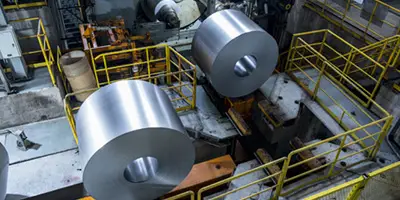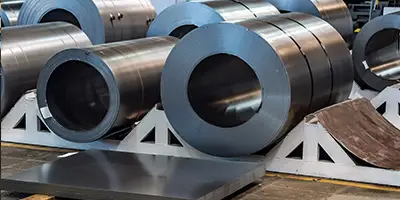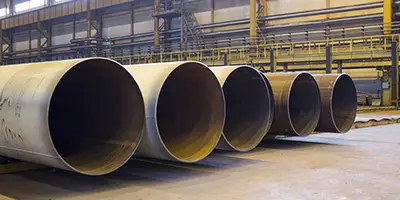Sch 80 Pipe Dimensions Chart: A Practical Guide for Engineers and Buyers
Schedule 80 steel pipe, often called Sch 80 pipe, is widely known for its thicker walls and higher strength compared to standard pipes. In industrial settings where pressure, temperature, and structural load are major concerns, Sch 80 becomes the preferred option. Understanding its dimensions—including wall thickness, outer diameter (
OD), and inside diameter (ID)—is essential when selecting the right pipe for engineering design or procurement.
What Is Schedule 80 Pipe?
Schedule 80 steel pipe represents a wall-thickness classification defined by ASME B36.10 for carbon steel and ASME B36.19 for stainless steel. The designation “Sch” on the pipe simply indicates its schedule, which tells you how thick the pipe wall is for a given nominal size. The higher the schedule number, the thicker the wall.
Most steel pipes are used to transport liquids or gases, so the inside diameter matters a lot. When the same nominal pipe size is made thicker—such as moving from Sch 40 to Sch 80—the inside diameter becomes smaller, but the pipe becomes significantly stronger.
Because of this, Sch 80 pipes are commonly selected for:
High-pressure hydraulic systems
High-temperature chemical transfer lines
Steam pipelines
Heavy-duty mechanical structures
Applications where the pipe is visible and needs higher impact resistance
Why Sch 80 Pipe Dimensions Matter ?
Choosing a pipe purely by nominal size is not enough. Designers must consider:
Wall thickness → determines pressure rating
Inside diameter (ID) → affects fluid flow capacity
Weight per meter or per foot → impacts handling and structural load
Pressure rating → dictates suitability for high-pressure systems
A Sch 80 pipe provides higher strength, durability, and safety margin, making it a reliable option for demanding projects.
Sch 80 Pipe Dimensions Chart
Below is a practical dimensions chart covering common nominal sizes. Values may vary slightly depending on manufacturing standards, but the chart provides a reliable engineering reference.
|
Nominal size [inches]
|
Outside diameter [inches]
|
Outside diameter [mm]
|
Wall thickness [inches]
|
Wall thickness [mm]
|
Weight [lb/ft]
|
Weight [kg/m]
|
1/8
|
0.405
|
10.3
|
0.095
|
2.41
|
0.31
|
0.47
|
|
1/4
|
0.54
|
13.7
|
0.119
|
3.02
|
0.54
|
0.8
|
|
1/2
|
0.84
|
21.3
|
0.147
|
3.73
|
1.09
|
1.62
|
|
3/4
|
1.05
|
26.7
|
0.154
|
3.91
|
1.47
|
2.2
|
|
1
|
1.315
|
33.4
|
0.179
|
4.55
|
2.17
|
3.24
|
|
1 1/4
|
1.66
|
42.2
|
0.191
|
4.85
|
3
|
4.47
|
|
1 1/2
|
1.9
|
48.3
|
0.2
|
5.08
|
3.63
|
5.41
|
|
2
|
2.375
|
60.3
|
0.218
|
5.54
|
5.02
|
7.48
|
|
2 1/2
|
2.875
|
73
|
0.276
|
7.01
|
7.66
|
11.41
|
|
3
|
3.5
|
88.9
|
0.3
|
7.62
|
10.25
|
15.27
|
|
3 1/2
|
4
|
101.6
|
0.318
|
8.08
|
12.5
|
18.63
|
|
4
|
4.5
|
114.3
|
0.337
|
8.56
|
14.98
|
22.32
|
|
5
|
5.563
|
141.3
|
0.375
|
9.53
|
20.78
|
30.97
|
|
6
|
6.625
|
168.3
|
0.432
|
10.97
|
28.57
|
42.56
|
|
8
|
8.625
|
219.1
|
0.5
|
12.7
|
43.39
|
64.64
|
|
10
|
10.75
|
273
|
0.594
|
15.09
|
64.43
|
96.01
|
|
12
|
12.75
|
323.8
|
0.688
|
17.48
|
88.63
|
132.08
|
|
14
|
14
|
355.6
|
0.75
|
19.05
|
106.13
|
158.1
|
|
16
|
16
|
406.4
|
0.844
|
21.44
|
136.61
|
203.53
|
|
18
|
18
|
457
|
0.938
|
23.83
|
170.92
|
254.55
|
|
20
|
20
|
508
|
1.031
|
26.19
|
208.87
|
311.17
|
|
24
|
24
|
610
|
1.125
|
30.96
|
296.58
|
442.08
|
|
|
|
|
|
|
|
|






 English
English Español
Español بالعربية
بالعربية










 Phone :
Phone :  Whatsapp :
Whatsapp :  Email :
Email : 


